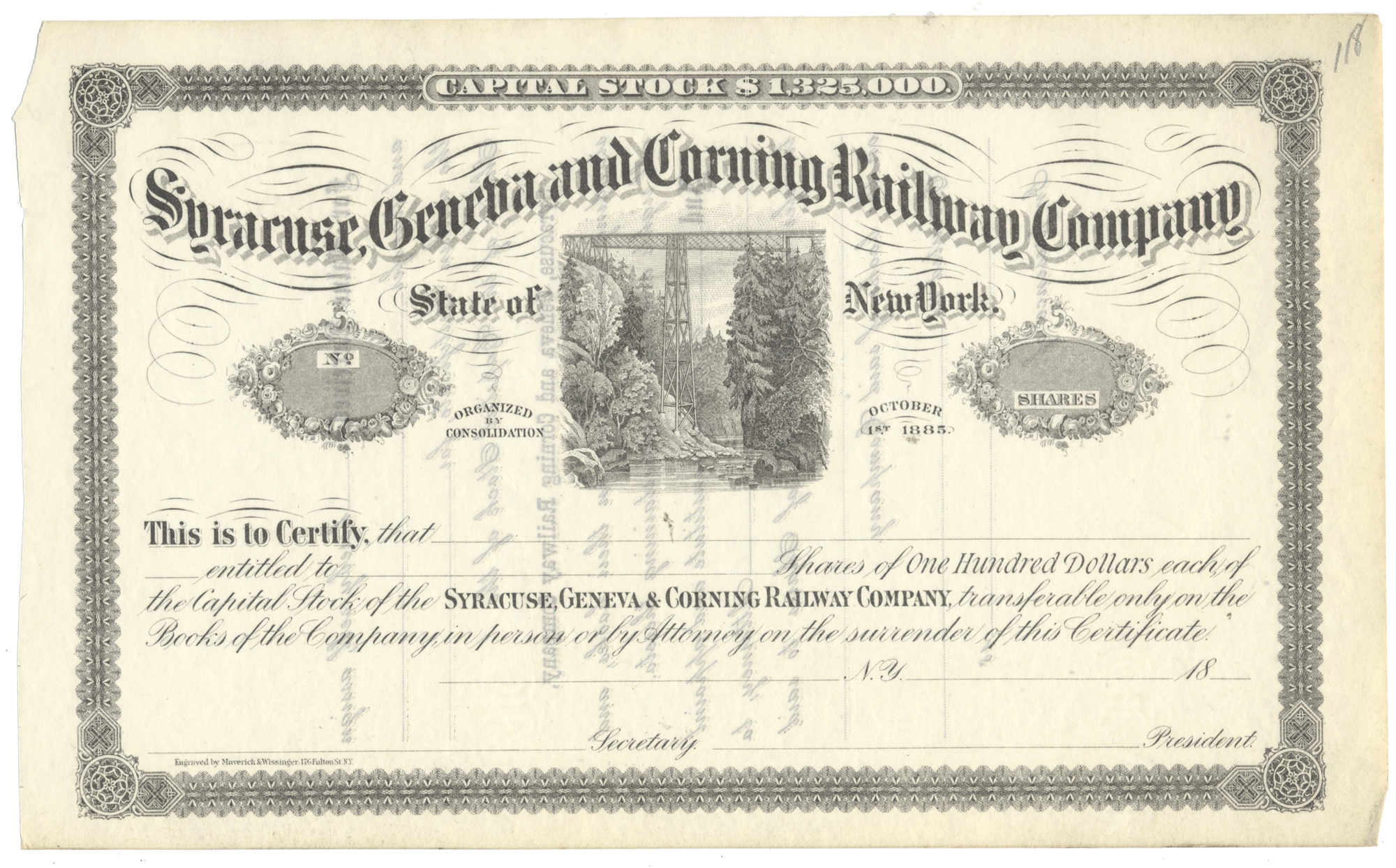Stevens Duryea, Inc.
- Guaranteed authentic document
- Orders over $75 ship FREE to U. S. addresses
Product Details
CompanyStevens Duryea, Inc.
Certificate Type
Capital Stock
Date Issued
April 2, 1921 (green underprint)
March 19, 1924 (yellow underprint)
Canceled
Yes
Printer
Brooks Bank Note Company
Signatures
Hand signed
Approximate Size
11" (w) by 8 1/2" (h)
Images
Show the exact certificate you will receive
Guaranteed Authentic
Yes
Additional Details
NA
Historical Context

Stevens Duryea was founded in Chicopee, Massachusetts after a falling-out between J. Frank Duryea and his brother Charles in 1898 over the affairs of the Duryea Motor Wagon Company. In 1900 Frank went on to form Hampden Automobile and Launch Company (Springfield) where he developed a new automobile and looked for a manufacturer to produce it. J. Stevens Arms and Tool Company, who were about to enter the developing car business, entered into a partnership with Frank and took over the factory of steam car and bicycle maker Overman (sharing the premises for several months).
Stevens-Duryea's first product was a two-cylinder, 5 hp Runabout that sold for $1,200 in 1901. No production numbers are known for 1901 but the firm produced 61 cars in 1902 and 483 in 1903. By 1904 the runabout, a tube chassis 6 hp flat twin buggy runabout victoria, was called the Model L. It had a flat-mounted water-cooled straight-twin engine, situated amidships of the car, four speed gearbox (three forward, one reverse), wire wheels, full-elliptic springs, and tiller steering. Weighing 1300 lb, it sold at $1,300. This would be imported to Britain by Joseph Baker, but would not succeed there. In the U.S., it would survive several years. It was joined in 1905 by the $2,500 Model R, an aluminum-bodied, five-seat, 20 hp four with three-speed gearbox and live axle.
The model line grew in 1906, adding a $2,400 runabout and a $3,300 limousine. There was also the new Big Six, with a huge 9.6 liter six-cylinder motor, seven-seater tulipwood body, weighing 2,900 pounds at $5,000.
In 1907, both the L and R were dropped, and Stevens-Duryea focused on sixes. The company still put four-cylinder engines in its 1908 Model X and 1909 Model XXX. After 1909, it made only six-cylinder engines. The shortage of skilled labor hampered the company; only some fifty units were sold in 1904, and maximum production did not exceed 100 a year.
By 1911, a Model Y (40 hp, six-cylinder) vehicle was being sold and forms the basis of Machinery's Reference Guide No. 60 Construction and Manufacture of Automobiles describing what is already almost conceptually indistinguishable from vehicles produced in the early 21st century. A remark in the publication emphasises how this configuration was reached in the preceding six years.
The 1915 Model D was the company's last new design, an 80 hp 472ci (7740cc) six. It was this year Frank Duryea sold out; production stopped in 1915 because of financial problems and the plant was sold to New England Westinghouse Company. Several former employees bought the name and goodwill and in 1919 restarted production of the D as the Model E, at a stratospheric $9,500 (at a time when a physician might earn $3,000 a year).
A nicely preserved example of a 1914 Stevens-Duryea is on display at the Winery at the Biltmore Estate. George Vanderbilt had purchased a 1913 model, but traded it in for 1914 since the latter had electric rather than oil-burning headlamps.
This did not improve the company's prospects, and it was purchased by Ray Owen (of Owen Magnetic) in 1923 to produce gas and electric cars under the Rauch and Lang brand, in a factory next to the Stevens-Duryea factory. A new model Stevens-Duryea was announced, the Model G, but this was basically the same as the Model E. After only 28 cars were sold in 1924, manufacture of the Model G continued on an orders received basis until 1927.
Related Collections
Additional Information
Certificates carry no value on any of today's financial indexes and no transfer of ownership is implied. All items offered are collectible in nature only. So, you can frame them, but you can't cash them in!
All of our pieces are original - we do not sell reproductions. If you ever find out that one of our pieces is not authentic, you may return it for a full refund of the purchase price and any associated shipping charges.













